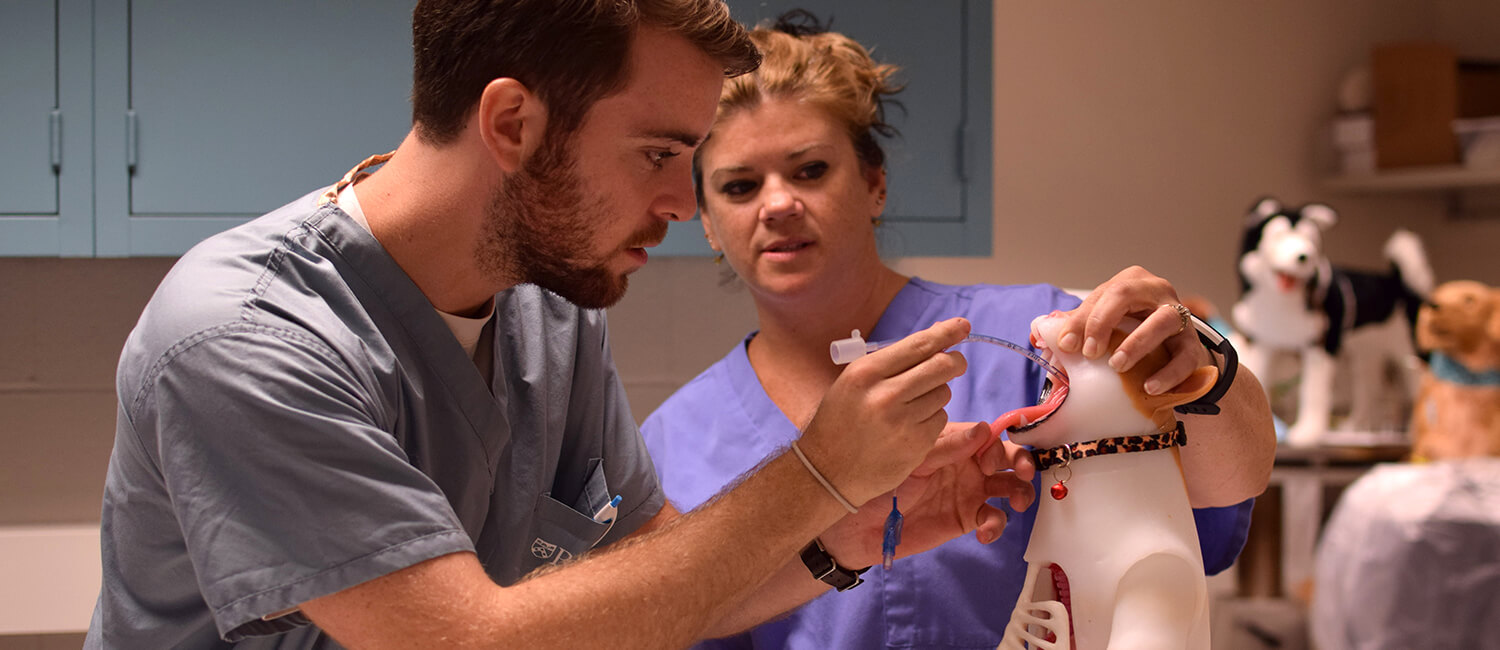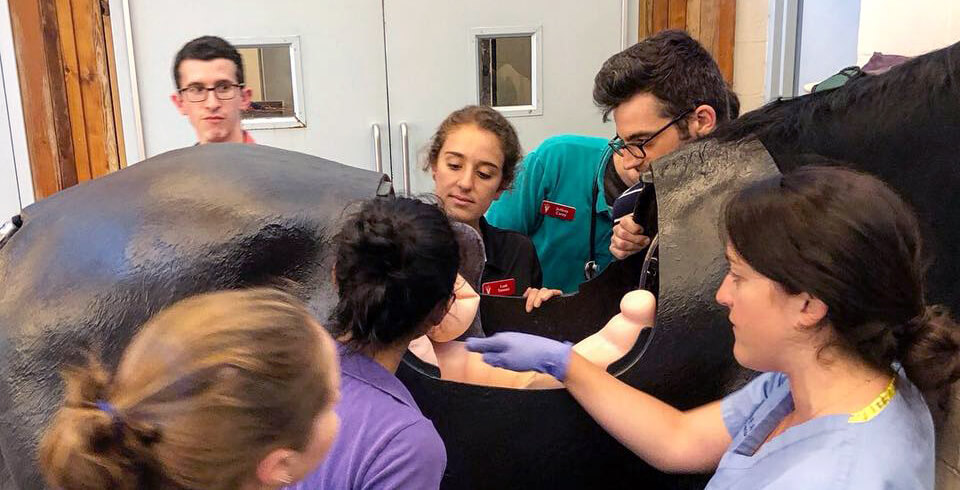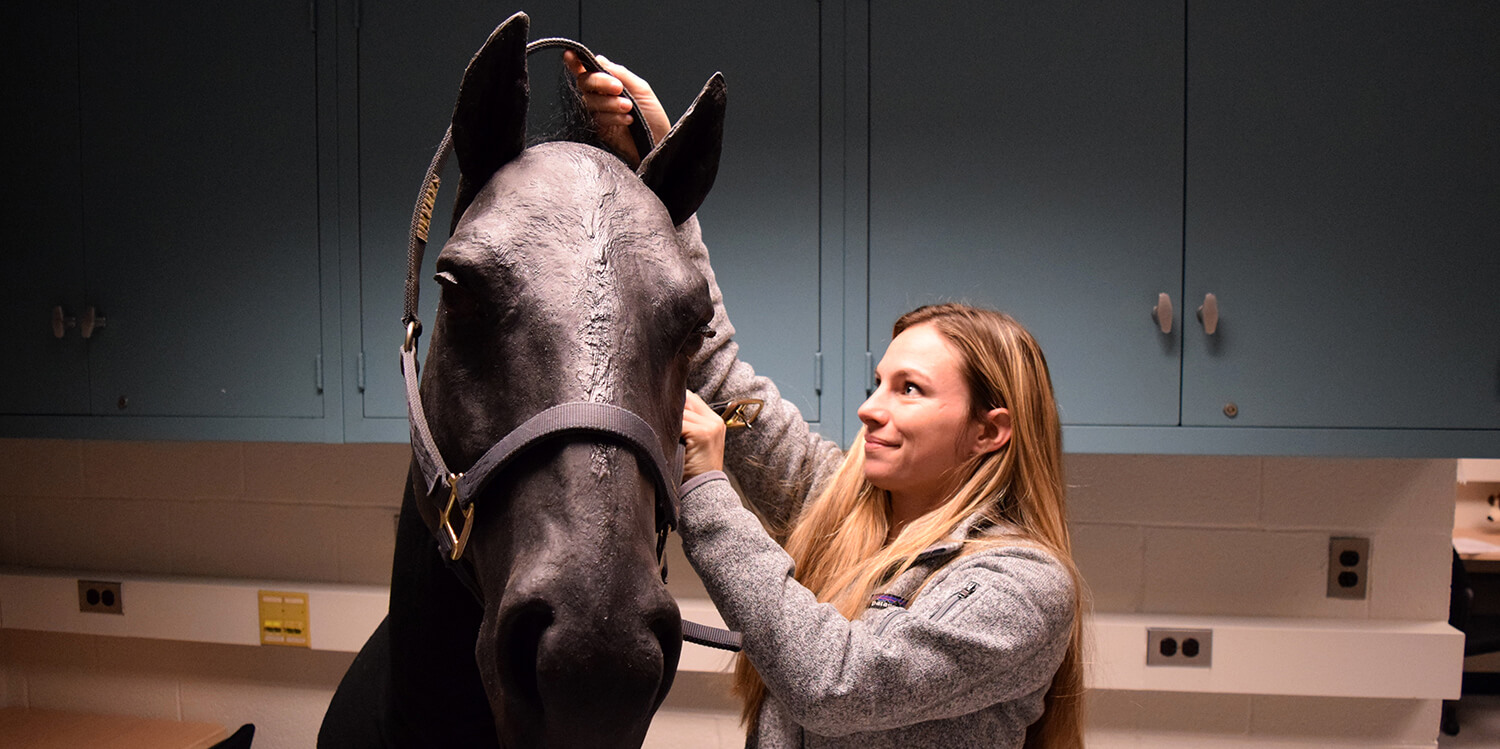 Patrick Robbins, V’20, prepares to intubate a feline simulation model under the guidance of Teaching Lab Coordinator Heather Rudolph, CVT.
Patrick Robbins, V’20, prepares to intubate a feline simulation model under the guidance of Teaching Lab Coordinator Heather Rudolph, CVT.
In today’s globalized world of rapid discovery, medical education — human and animal — has not, perhaps, kept pace with innovation. On the campus where modern veterinary medicine was born, Penn Vet is working to change this, transforming how veterinary educators teach, how students learn, and the facilities in which it all happens.
“The speed of biomedical discovery is ever-increasing. A half-century ago, the doubling time of biomedical knowledge was measured in decades. Today, it’s measured in months,” said Dr. Kathryn E. Michel, Associate Dean of Education. “Medical education has adapted a bit over time but not enough to accommodate the speed at which our knowledge advances.”
In 1910, scholar and educator Abraham Flexner published a report for the Carnegie Foundation that would establish how medical education looked for the next century. In it, Flexner presented a recommendation for a uniform medical school curriculum structure, prescribing two years of core basic science followed by two years of clinical training. This Flexnerian model became the standard until recently. Somewhat fixed and prescriptive, although Flexner’s approach is “not completely broken,” said Michel, it is rigid and unaccommodating.
“The world we live and work in today requires students to be flexible in how they receive knowledge and achieve understanding,” said Dr. Jennifer Punt, Penn Vet’s Associate Dean of One Health. “We want to train them to become lifelong learners by teaching them to critically consume and evaluate information, formulate questions, and look for answers. As educators, we can’t just impart content anymore.”
 At New Bolton Center, students participate in a palpation lab, feeling for abnormalities in the intestinal tract
At New Bolton Center, students participate in a palpation lab, feeling for abnormalities in the intestinal tract
of a full-body horse simulation model.
For an example of how veterinary education has begun evolving, Michel pointed to the Competency-Based Veterinary Education (CVBE) education framework launched earlier this year by the Association of American Veterinary Medical Colleges (AAVMC). The outcomes-based, learner-centric approach outlines nine core abilities students need to exhibit to graduate. It’s designed to improve education by preparing students for careers that “meet the needs of animals and expectations of society.”
Adapting the AAVMC’s framework, Penn Vet has created similar benchmarks to guide reinvention of the School’s curriculum: Scholarship, Critical Thinking, Patient Healthcare, Population Healthcare, One Health, Communication, Collaboration, Professionalism, Regulation, and Finance.
“In addition to developing basic medical knowledge, skills, and clinical reasoning abilities, we want our graduates to excel in the important soft skills,” explained Michel. “Truly competent and skilled practitioners can communicate well, work collaboratively, and understand the financial and regulatory aspects of their careers.”
For Penn Vet students, the School’s curriculum redesign will bring new programs; opportunities for students to craft their own course of study; more combined dual degrees with other Penn schools; increased interdisciplinary learning experiences; and new state-of-the-art facilities. The School will also offer non-curricular support services, such as Penn Vet’s new career counselor.
“Increasingly, veterinarians have a larger role to play in public and human health,” said Punt. “Penn Vet has a long history of preparing students for new fields, from the development of the VMD-PhD program in 1969 through to Dean Hendricks’ focus on One Health. The curriculum work we’re doing now is the next iteration.”
 Molly Larson, V’19, practices placing a halter on a horse head model.
Molly Larson, V’19, practices placing a halter on a horse head model.